Multiple generation distinct toxicant exposures induce epigenetic transgenerational inheritance of enhanced pathology and obesity
- PMID: 38162685
- PMCID: PMC10756336
- DOI: 10.1093/eep/dvad006
Multiple generation distinct toxicant exposures induce epigenetic transgenerational inheritance of enhanced pathology and obesity
Abstract
Three successive multiple generations of rats were exposed to different toxicants and then bred to the transgenerational F5 generation to assess the impacts of multiple generation different exposures. The current study examines the actions of the agricultural fungicide vinclozolin on the F0 generation, followed by jet fuel hydrocarbon mixture exposure of the F1 generation, and then pesticide dichlorodiphenyltrichloroethane on the F2 generation gestating females. The subsequent F3 and F4 generations and F5 transgenerational generation were obtained and F1-F5 generations examined for male sperm epigenetic alterations and pathology in males and females. Significant impacts on the male sperm differential DNA methylation regions were observed. The F3-F5 generations were similar in ∼50% of the DNA methylation regions. The pathology of each generation was assessed in the testis, ovary, kidney, and prostate, as well as the presence of obesity and tumors. The pathology used a newly developed Deep Learning, artificial intelligence-based histopathology analysis. Observations demonstrated compounded disease impacts in obesity and metabolic parameters, but other pathologies plateaued with smaller increases at the F5 transgenerational generation. Observations demonstrate that multiple generational exposures, which occur in human populations, appear to increase epigenetic impacts and disease susceptibility.
Keywords: DDT; Epigenetic; inheritance; jet fuel; obesity; pathology; review; sperm; testis; transgenerational; vinclozolin.
© The Author(s) 2023. Published by Oxford University Press.
Conflict of interest statement
None declared.
Figures
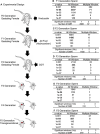

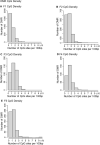


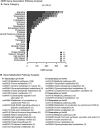
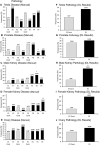


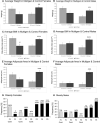
Similar articles
-
Epigenetic transgenerational inheritance of testis pathology and Sertoli cell epimutations: generational origins of male infertility.Environ Epigenet. 2019 Aug 29;5(3):dvz013. doi: 10.1093/eep/dvz013. eCollection 2019 Jul. Environ Epigenet. 2019. PMID: 31528361 Free PMC article.
-
Sperm epimutation biomarkers of obesity and pathologies following DDT induced epigenetic transgenerational inheritance of disease.Environ Epigenet. 2019 May 27;5(2):dvz008. doi: 10.1093/eep/dvz008. eCollection 2019 Apr. Environ Epigenet. 2019. PMID: 31186947 Free PMC article.
-
Atrazine induced epigenetic transgenerational inheritance of disease, lean phenotype and sperm epimutation pathology biomarkers.PLoS One. 2017 Sep 20;12(9):e0184306. doi: 10.1371/journal.pone.0184306. eCollection 2017. PLoS One. 2017. PMID: 28931070 Free PMC article.
-
Efficacy of nicergoline in dementia and other age associated forms of cognitive impairment.Cochrane Database Syst Rev. 2001;2001(4):CD003159. doi: 10.1002/14651858.CD003159. Cochrane Database Syst Rev. 2001. PMID: 11687175 Free PMC article.
-
A systematic review of evidence on malignant spinal metastases: natural history and technologies for identifying patients at high risk of vertebral fracture and spinal cord compression.Health Technol Assess. 2013 Sep;17(42):1-274. doi: 10.3310/hta17420. Health Technol Assess. 2013. PMID: 24070110 Free PMC article.
Cited by
-
Environmentally-relevant doses of bisphenol A and S exposure in utero disrupt germ cell programming across generations resolved by single nucleus multi-omics.bioRxiv [Preprint]. 2024 Dec 10:2024.12.05.627072. doi: 10.1101/2024.12.05.627072. bioRxiv. 2024. Update in: Environ Health Perspect. 2025 Jun 3. doi: 10.1289/EHP16981. PMID: 39713385 Free PMC article. Updated. Preprint.
-
Transgenerational epigenetic inheritance increases trait variation but is not adaptive.Evolution. 2025 Jun 14;79(6):1033-1043. doi: 10.1093/evolut/qpaf050. Evolution. 2025. PMID: 40065197 Free PMC article.
-
Environmental pollutants and atherosclerosis: Epigenetic mechanisms linking genetic risk and disease.Atherosclerosis. 2025 May;404:119131. doi: 10.1016/j.atherosclerosis.2025.119131. Epub 2025 Feb 15. Atherosclerosis. 2025. PMID: 39986958 Review.
-
Observational methods for human studies of transgenerational effects.Epigenetics. 2024 Dec;19(1):2366065. doi: 10.1080/15592294.2024.2366065. Epub 2024 Jun 13. Epigenetics. 2024. PMID: 38870389 Free PMC article.
-
Transgenerational epigenetic inheritance increases trait variation but is not adaptive.bioRxiv [Preprint]. 2024 Apr 20:2024.04.15.589575. doi: 10.1101/2024.04.15.589575. bioRxiv. 2024. Update in: Evolution. 2025 Jun 14;79(6):1033-1043. doi: 10.1093/evolut/qpaf050. PMID: 38659883 Free PMC article. Updated. Preprint.
References
LinkOut - more resources
Full Text Sources
Molecular Biology Databases
Miscellaneous

